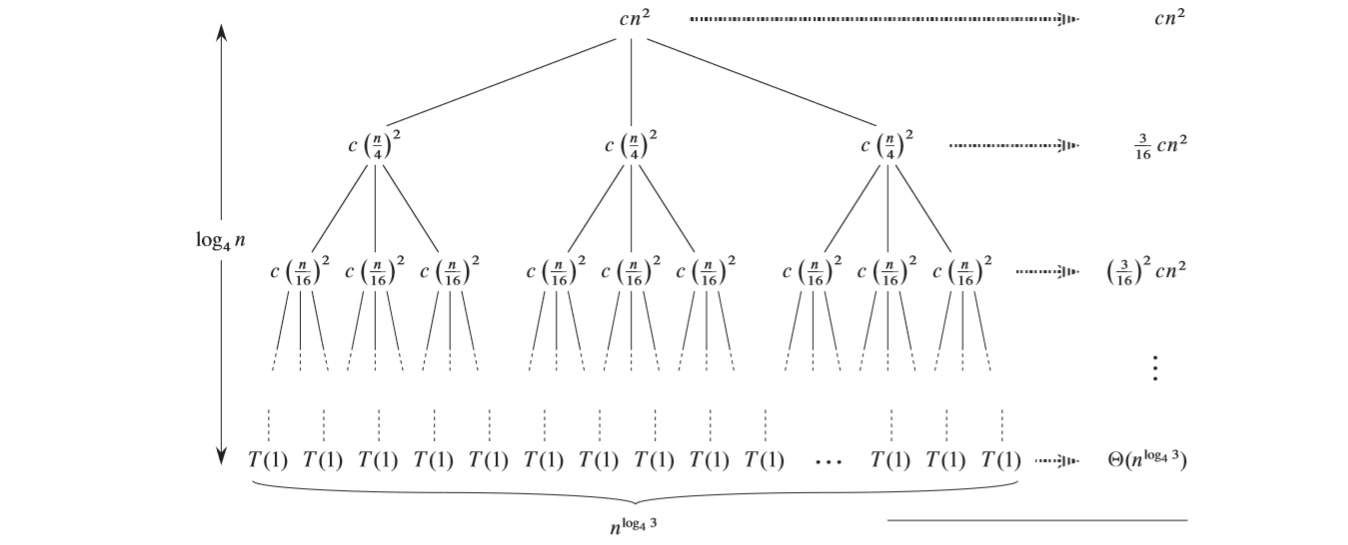This blog is my first post of the course note of the classical textbook, Introduction to Algorithm. Many graphs and formulas might be directed retrieved from this book. Some other blogs might utilize the book Algorithms, 4th and other open source online with proper citation.
This series of blog is only for the learning purpose. Please inform me if violating any copyright issue.
Chapter 2 Basic Analysis
Loop invariant
Properties which remain the same in the whole iterating process.
- It could testify the correctness of algorithm.
- It should be satisfied in the following three conditions:
- Initialization: It is true before the first iteration
- Maintenance: If it is true after the n's iteration, it should remain true before the (n+1)'s iteration
Termination: The terminational condition of the iteration should be false
Simple Sorting Algorithms
Selection sort
- Select the smallest one and put into the first .
Insertion Sort
- Insert the number into a sorted queue

The Principles of Analyzing Algorithm
- No concurrent operation
- Some computational costs can be ignored
- Precision is not important when analyzing the algorithms
Chapter 3 Growth of Functions
Asymptotic notations
\(\Theta\)-Notation
\[ \Theta(g(n))=\{f(n):\text{ there exist positive constants }c_1,c_2,\text{ and } n_0 \text{ such that }\\0\le c_1g(n)\le f(n)\le c_2g(n) \text{ for all } n \ge n_0\} \]
\(O\)-Notation
\[ O(g(n))=\{f(n):\text{ there exist positive constant }c,\text{ and } n_0 \text{ such that }\\0\le f(n)\le cg(n) \text{ for all } n \ge n_0\} \]
\(\Omega\)-Notation
\[ \Omega(g(n))=\{f(n):\text{ there exist positive constant }c,\text{ and } n_0 \text{ such that }\\0\le cg(n)\le f(n) \text{ for all } n \ge n_0\} \]
\(o\)-Notation
\[ o(g(n))=\{f(n):\text{ for any positive constant }c>0,\text{ there exits a constant }\\n_0 >0 \text{ such that }0\le f(n)< cg(n) \text{ for all } n \ge n_0\} \]
We have:
\[ lim_{n\to \infty}=\frac{f(n)}{g(n)}=0 \]
\(\omega\)-Notation
\[ w(g(n))=\{f(n):\text{ for any positive constant }c>0,\text{ there exits a constant }\\n_0 >0 \text{ such that }0\le cg(n) < f(n) \text{ for all } n \ge n_0\} \]
We have:
\[ lim_{n\to \infty}=\frac{f(n)}{g(n)}=\infty \] ### Summary

Standard notations
Monotonicity
monotonically increasing: if m ≤ n implies f(m) ≤ f(n).
monotonically decreasing: if m ≤ n implies f(m) ≥ f(n).
strictly increasing: if m < n implies f(m) < f(n).
strictly decreasing: if m < n implies f(m) > f(n).
Chapter 4 Divide and Conquer and Analysis
Recurrences
There are three methods which could determine the asymptotical bonds.
Substitutions method
We guess a bound and then apply induction to prove the correctness of our guess. (Refer to section 4.3 for more information)
recursion-tree method
Consider a recurrence \(T(n)=3T(n/4)+\Theta(n^2)\).
We can apply the recursion tree:

1544181457372
Then we add up the costs over all levels, finally we will come up the result that \(T(n)=O(n^2)\). (Omit the mathematic deduction process, please refer to section 4.4)
master method

1536644230277
Maximum Subarray
# Code from geeksforgeeks
# Available at: https://www.geeksforgeeks.org/largest-sum-contiguous-subarray/
# A Divide and Conquer based program
# for maximum subarray sum problem
# Find the maximum possible sum in
# arr[] auch that arr[m] is part of it
def maxCrossingSum(arr, l, m, h) :
# Include elements on left of mid.
sm = 0; left_sum = -10000
for i in range(m, l-1, -1) :
sm = sm + arr[i]
if (sm > left_sum) :
left_sum = sm
# Include elements on right of mid
sm = 0; right_sum = -1000
for i in range(m + 1, h + 1) :
sm = sm + arr[i]
if (sm > right_sum) :
right_sum = sm
# Return sum of elements on left and right of mid
return left_sum + right_sum;
# Returns sum of maxium sum subarray in aa[l..h]
def maxSubArraySum(arr, l, h) :
# Base Case: Only one element
if (l == h) :
return arr[l]
# Find middle point
m = (l + h) // 2
# Return maximum of following three possible cases
# a) Maximum subarray sum in left half
# b) Maximum subarray sum in right half
# c) Maximum subarray sum such that the
# subarray crosses the midpoint
return max(maxSubArraySum(arr, l, m),
maxSubArraySum(arr, m+1, h),
maxCrossingSum(arr, l, m, h))
# Driver Code
arr = [2, 3, 4, 5, 7]
n = len(arr)
max_sum = maxSubArraySum(arr, 0, n-1)
print("Maximum contiguous sum is ", max_sum) Chapter 5
Generate a random integer from 3 to 7 using Ransom(0, 1). Make sure the integer will be generated equally in probability.
def Random (3, 7):
b1 = Random(0, 1)
b2 = Random(0, 1)
b3 = Random(0, 1)
n = convertToInteger(b1, b2, b3)
if n > 4:
Random(3, 7)
return n + 3